
Update on the Lithium Battery Mark Telephone Number – A Worldwide Approach
Lithium batteries make up a significant amount of the total number of parcels of dangerous goods shipped. Some of these are high-powered batteries, which are treated pretty much as regular dangerous goods. Many of them are, however, low-powered batteries which were determined, years ago, to be able to be shipped with reduced requirements. Most hazard communication was dropped for them – in many cases, it was reduced to a single requirement. Each package of low-powered batteries needs to display a “Lithium Battery Handling Mark” (or “Lithium Battery Mark”).
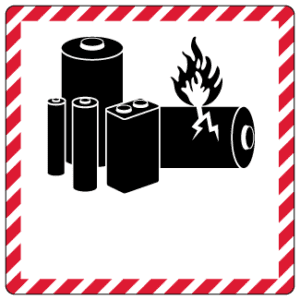 Figure 1 – Lithium Battery Handling Mark
Figure 1 – Lithium Battery Handling Mark
This single mark would identify packages of small lithium batteries to handlers, carriers and emergency responders. The graphic of the burning batteries identifies that the batteries are highly flammable (in the wrong circumstances). The original designers of this mark at the United Nations Subcommittee on the Transportation of Dangerous Goods also required that the mark bear the UN number (or numbers) of the batteries in the package below the battery graphic. Below the UN number was a place for “a telephone number for more information.”
But that created a problem. What exactly was this telephone number for? What was this “more information” that the person on the other end should be able to provide? Unfortunately, the UN Recommendations on the Transport of Dangerous Goods was silent on such questions.
The Number Problem
When the mark was first introduced, lithium battery shippers and carriers were rather stumped. Some assumed that it was similar to the 24-hour telephone number requirement found in Canada’s “Transportation of Dangerous Goods Regulations” (TDGR) or the U.S. “Hazardous Materials Regulations” (HMR). But nowhere in either the UN or national regulations did it say that this number had to be available 24-hours. And many third-party providers of emergency numbers requested that their numbers not be used, because they feared receiving too many non-emergency calls regarding the batteries.
There was no description, either, if it was required to be accessible from outside the shipper’s home country for international shipment. Could a toll-free number, say, that only worked in the U.S. be used to meet this requirement? The regulations were silent.
The biggest issue was “what sort of information do we provide on this number?” Immediate emergency response information might be a reasonable guess (although the regulations didn’t say) but remember, the main danger of lithium batteries is fire. An emergency number for fire information would be hard to access if the package causing the problem is already on fire.
It appeared that the number, at least from the consideration of enforcement, didn’t have to be a 24-hour one or have “comprehensive emergency information.” It could be a regular business number, running in business hours, where a caller could get non-emergency information, such as a battery testing report or specification sheet. At least, there was nothing in either the UN Recommendations or national regulations to say otherwise.
The End of the Telephone Number
The telephone number requirement may have sounded good at the start, but the lack of clarity in the regulatory text and insufficient description of what exactly the number was to be used for made it next to useless. (I’ve never actually spoken to anyone who’s called one of these numbers for a regulatory or safety purpose.) The confusion the requirement had introduced wasn’t worth the effort. So, in the 22nd edition of the UN Recommendations, the requirement for the telephone number was dropped.
The UN and national regulators realized that there are likely millions of preprinted packages and adhesive labels already on the market showing the telephone number (or at least with a demarked space for the number to be added.) So, the UN added the following note:
“Note: The mark shown in Figure 5.2.5 in 5.2.1.9 of the twenty-first revised edition of the Recommendations on the Transport of Dangerous Goods, Model Regulations, may be continued to be applied until 31 December, 2026.”
This means lithium battery marks displaying the telephone number may be used until the start of 2027. This, the regulators thought, would give shippers time to use up old stock and switch to the new format. But that would rely on national authorities to also remove the requirement for the label in a timely manner. Unfortunately, the effects of Covid have delayed many regulatory updates around the world, leaving the situation unclear in many places.
What Are the Current Requirements?
So, while we’re in this transition period, what are the requirements? I felt it would be useful to do a quick summary.
- Ground or domestic vessel shipment under U.S. Regulations – The Hazardous Materials Regulations have not been updated to remove the legal requirement to have a telephone number on the document. (Remember that the U.S. and Canadian regulations are not updated on a fixed schedule and changes may be a multi-year procedure.) The Department of Transportation plans to remove the number in an upcoming rulemaking called HM-215Q.In the meantime, though, they have provided a workaround using a “Notice of Enforcement” issued in November 2022. This basically announces their policy that they will not treat shipments that are prepared using the most updated rules of the UN Recommendations, the ICAO Technical Instructions for the Safe Transport of Dangerous Goods by Air (ICAO TI) or the International Maritime Dangerous Goods Code (IMDG). Since these three documents have declared the telephone number to be optional (and to be phased out by 2027), American shippers may omit the telephone number without fear of being cited for non-compliance. The publication of HM-215Q as a final rule will make all this official.
- Ground or domestic vessel shipment under Canadian Regulations – Transport Canada is also lagging behind the UN in officially eliminating the need for the telephone number. Even in its proposed harmonization update issued in 2022, the telephone number was not mentioned. However, the TDGR contains its own workaround. Section 4.1 of the Regulations says “A person must not offer for transport, transport or import a means of containment that contains dangerous goods unless each dangerous goods safety mark required by this Part and illustrated in the appendix to this Part, or illustrated in Chapter 5.2 or 5.3 of the UN Recommendations, is displayed on it…” So, since the current edition of the UN Recommendations allows for a Lithium Battery Handling Mark without the telephone number, it appears that Transport Canada should also accept a mark without it. (There is a problem that Special Provision 34, the section that covers shipment of low-powered batteries, does specifically refer to the mark “in accordance with section 4.24” where the telephone number is shown. However, since it appears that the intention of the TDGR is to allow shippers to use marks and labels that are acceptable under the current UN Regulations, it’s most likely that the UN equivalent mark would be accepted.) We hope that by the time the Harmonization Amendment is published as a final version that the removal of the telephone number will be addressed.
- Shipment by air under ICAO/IATA rules – The ICAO Technical Instructions and the IATA Dangerous Goods Regulations currently consider the telephone number to be optional. It must be totally removed by January 1, 2027. Be aware that air carriers are not known for being willing to be flexible over such changes, so anyone who ships by air should be prepared to use only marks without the telephone number as of that date or risk having their shipments refused. Keep this in mind for shipments that may start in late 2026 but still be in transport by January 1, 2027.
- Shipment by international marine under the IMDG Code – The IMDG Code also states that “the mark shown in the figure “Lithium battery mark” in 5.2.1.10.2 of the IMDG Code Amendment 40-20, showing the telephone number for additional information, may continue to be applied until 31 December 2026.” So marine shippers should also take care to remove the telephone number on shipments that are expected to be in transit by January 1, 2027.
- Shipment by road in the European Union – Interestingly, the ADR 2023 (the regulation for road shipment within the European Union) in section 5.2.1.9, shows the lithium battery mark without the telephone number, but without the note from the UN Recommendations permitting the number to be used until 2027. Therefore, it seems that the EU does not currently allow the telephone number to be shown on the mark, although it does not specifically say including the telephone number would be considered a violation.
Remember, if you want to include the telephone number until the end of 2026, you should put some thought into what the number should be. Don’t use a third-party emergency telephone number unless your provider has given authorization for it to be used on lithium battery marks. If you want to use an internal number, you should consider what sort of questions are likely to be asked on this number and make sure that whoever answers that number is prepared to discuss your batteries with customers or carriers.
Conclusions
The requirement for a telephone number on the lithium battery handling mark may have seemed a good idea to the original regulators, but it’s not proved it provides any increase in transportation safety. As we’ve seen, the international regulations are already clear – the telephone number is now optional and must be removed as of January 1, 2027. For Canadian and U.S. ground and domestic vessel shipments, it should be acceptable to inspectors to use marks without the telephone number now, although full confirmation of the removal of the number is awaiting amendments to the specific regulations. It’s hoped these amendments occur before 2027.
So, shippers, it would be a good idea to start the shift now to using the marks without the telephone number. The year 2027 isn’t that far away and it can be expensive to have to dispose of incorrectly marked packages or preprinted labels if you have a large stock on hand by then. Also, shippers and carriers should update their training protocols to ensure that packages without the telephone number are recognized as compliant.
Contact Us
Do you have any questions about shipping lithium batteries? Take a look at our Lithium Battery FAQ or contact our team of experts at 855.734.5469 or send us an email, we’re happy to help.
Stay up to date and sign up for our newsletter!
We have all the products, services, and training you need to ensure your staff is properly trained and informed.
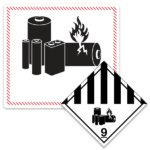 Lithium Batteries Labels Lithium Batteries Labels |
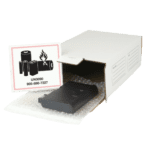 Lithium Battery Lithium BatteryShipping Kits |
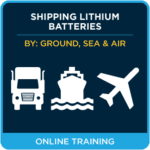 Shipping Lithium Batteries Shipping Lithium BatteriesTraining Courses |
References:
- UN Recommendations on the Transportation of Dangerous Goods, 23rd edition, https://unece.org/transport/dangerous-goods/un-model-regulations-rev-23
- UN Recommendations on the Transportation of Dangerous Goods, 21rd edition, https://unece.org/rev-21-2019
- “Hazardous Materials Regulations,” Title 49 of the Code of Federal Regulations, https://www.ecfr.gov/current/title-49/subtitle-B/chapter-I/subchapter-C
- Justice Canada, “Transportation of Dangerous Goods Regulations,” https://laws-lois.justice.gc.ca/eng/regulations/sor-2001-286/
- International Civil Aviation Organization, Technical Instructions For The Safe Transport of Dangerous Goods by Air (Doc 9284), https://www.icao.int/safety/DangerousGoods/Pages/Doc9284-Technical-Instructions.aspx
- International Air Transport Association, IATA Dangerous Goods Regulations, https://www.iata.org/en/programs/cargo/dgr/
- International Maritime Dangerous Goods Code, https://www.imo.org/en/OurWork/Safety/Pages/DangerousGoods-default.aspx
- UNECE, ADR 2023 – Agreement concerning the International Carriage of Dangerous Goods by Road, https://unece.org/transport/standards/transport/dangerous-goods/adr-2023-agreement-concerning-international-carriage

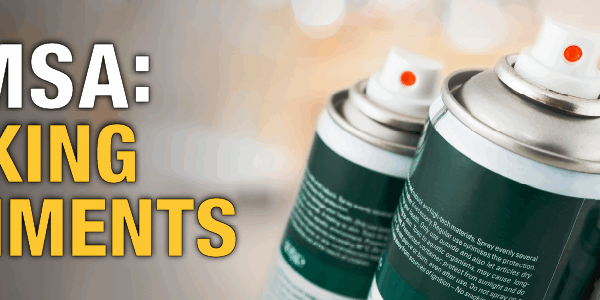
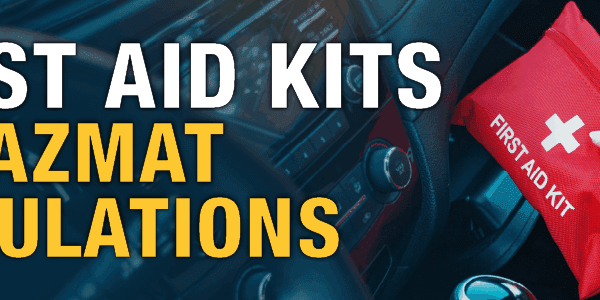



 ICC USA
ICC USA ICC Canada
ICC Canada